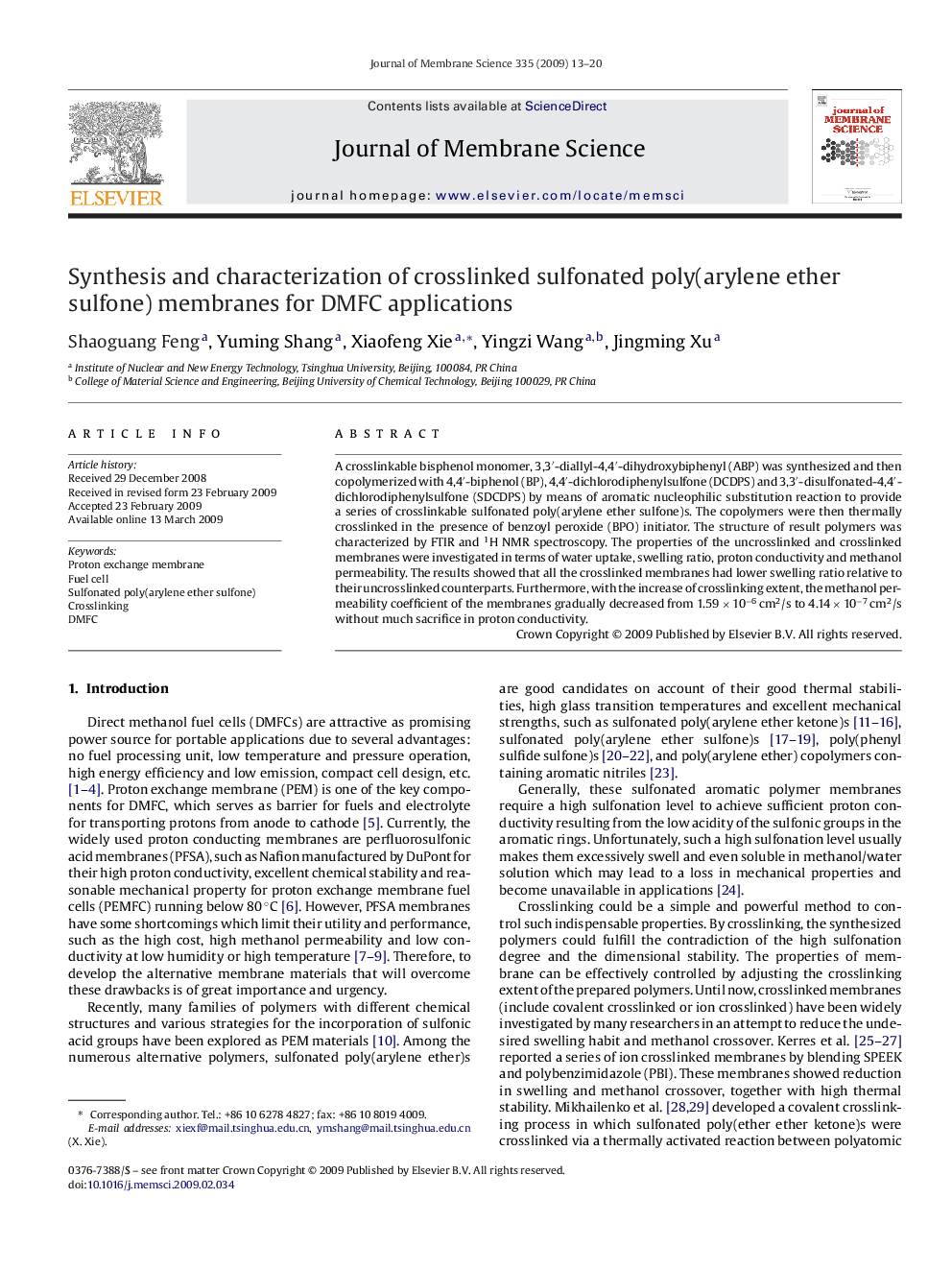| Article ID | Journal | Published Year | Pages | File Type |
|---|---|---|---|---|
| 637082 | Journal of Membrane Science | 2009 | 8 Pages |
A crosslinkable bisphenol monomer, 3,3′-diallyl-4,4′-dihydroxybiphenyl (ABP) was synthesized and then copolymerized with 4,4′-biphenol (BP), 4,4′-dichloro-diphenylsulfone (DCDPS) and 3,3′-disulfonated-4,4′-dichlorodiphenylsulfone (SDCDPS) by means of aromatic nucleophilic substitution reaction to provide a series of crosslinkable sulfonated poly(arylene ether sulfone)s. The copolymers were then thermally crosslinked in the presence of benzoyl peroxide (BPO) initiator. The structure of result polymers was characterized by FTIR and 1H NMR spectroscopy. The properties of the uncrosslinked and crosslinked membranes were investigated in terms of water uptake, swelling ratio, proton conductivity and methanol permeability. The results showed that all the crosslinked membranes had lower swelling ratio relative to their uncrosslinked counterparts. Furthermore, with the increase of crosslinking extent, the methanol permeability coefficient of the membranes gradually decreased from 1.59 × 10−6 cm2/s to 4.14 × 10−7 cm2/s without much sacrifice in proton conductivity.
